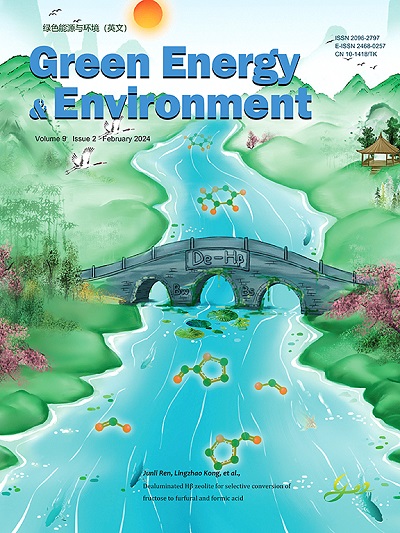机械驱动的化学反应
IF 10.7
1区 工程技术
Q1 CHEMISTRY, PHYSICAL
引用次数: 0
摘要
传统的化学工艺通常会产生大量废物,对水、空气和土壤造成严重污染。开发生态友好型化学方法对于经济和环境的可持续发展至关重要。机械驱动化学具有材料可回收和副产品最少的潜力,非常符合绿色化学原则。尽管机械驱动化学起源于 2000 多年前,并经过了近 200 年的科学研究,但在实践中尚未得到广泛应用。这可能是由于缺乏对机械力的全面了解和复杂的物理效应,从而对反应效率和可扩展性提出了挑战。本综述总结了机械驱动化学的历史发展,并讨论了其在各种物理机制方面的进展,包括机械化学、摩擦化学、压电化学和接触电化(CE)化学。详细介绍了接触电化引发的化学反应,包括离子转移、电子转移和自由基生成,强调了电子转移引发的自由基的主导作用,以及离子转移通过电双层(EDL)形成的影响。推进高效、环保和可控的绿色化学技术,可以减少对传统能源(如电能和热能)和有毒化学试剂的依赖,促进材料合成和催化技术的创新,并为更广泛的化学应用建立新的范例。本文章由计算机程序翻译,如有差异,请以英文原文为准。
Mechano-driven chemical reactions
Traditional chemical processes often generate substantial waste, leading to significant pollution of water, air, and soil. Developing eco-friendly chemical methods is crucial for economic and environmental sustainability. Mechano-driven chemistry, with its potential for material recyclability and minimal byproducts, is well-aligned with green chemistry principles. Despite its origins over 2000 years ago and nearly 200 years of scientific investigation, mechano-driven chemistry has not been widely implemented in practice. This is likely due to a lack of comprehensive understanding and the complex physical effects of mechanical forces, which challenge reaction efficiency and scalability. This review summarizes the historical development of mechano-driven chemistry and discusses its progress across various physical mechanisms, including mechanochemistry, tribochemistry, piezochemistry, and contact electrification (CE) chemistry. CE-induced chemical reactions, involving ion transfer, electron transfer, and radical generation, are detailed, emphasizing the dominant role of radicals initiated by electron transfer and the influence of ion transfer through electrical double layer (EDL) formation. Advancing efficient, eco-friendly, and controllable green chemical technologies can reduce reliance on traditional energy sources (such as electricity and heat) and toxic chemical reagents, fostering innovation in material synthesis, catalytic technologies, and establishing a new paradigm for broader chemical applications.
求助全文
通过发布文献求助,成功后即可免费获取论文全文。
去求助
来源期刊

Green Energy & Environment
Energy-Renewable Energy, Sustainability and the Environment
CiteScore
16.80
自引率
3.80%
发文量
332
审稿时长
12 days
期刊介绍:
Green Energy & Environment (GEE) is an internationally recognized journal that undergoes a rigorous peer-review process. It focuses on interdisciplinary research related to green energy and the environment, covering a wide range of topics including biofuel and bioenergy, energy storage and networks, catalysis for sustainable processes, and materials for energy and the environment. GEE has a broad scope and encourages the submission of original and innovative research in both fundamental and engineering fields. Additionally, GEE serves as a platform for discussions, summaries, reviews, and previews of the impact of green energy on the eco-environment.
 求助内容:
求助内容: 应助结果提醒方式:
应助结果提醒方式:


